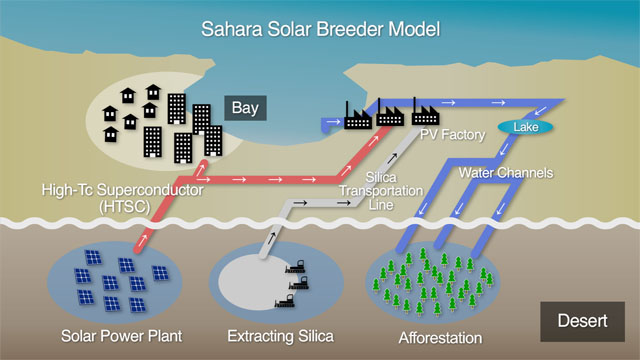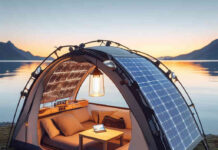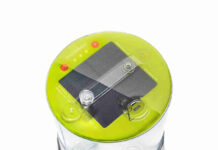
The Sahara Solar Breeder Project, a huge project led by Japanese scientists, is getting underway. Its goal is to provide the ultimate solution to humanities biggest problem in the 21st century – our reliance on finite energy resources.
This project will use the world’s biggest desert, the Sahara, as an energy source. Deserts have ample sunlight over a vast area, and their sand contains lots of silica – the raw material for silicon. So the idea is to build silicon manufacturing plants around the desert and solar power plants in the desert, and use the power generated to build more silicon and power plants in a “breeding” process. In the future, such plants could supply energy worldwide, through DC power lines using high-temperature superconductors.
“Oxygen is the most abundant constituent of the earth’s crust, and makes up 20% of the atmosphere as well. The second most abundant constituent is silicon. Looking at the periodic table, you can see that silicon and oxygen combine to form silica – the most abundant raw material on Earth. If we can use desert sand to make a substance that provides energy, this will be the key to solving the energy problem. This is probably doable. Moreover, the energy we continually receive from the Sun is 10,000 times the energy currently used by mankind. So if we can utilize 0.01% of it skillfully, we won’t have a shortage of energy, but a surplus.”
This research is starting this year, as a joint project by universities in Japan and Algeria, through the International Research Project on Global Issues by the JST and JICA. But to make the project practical, many problems must be solved. Ultimately, the task will require an effort worldwide, especially among North African countries.
“The total research expenditure will be 100 million yen annually for five years, but that won’t be enough to complete the project. Nevertheless, we want to establish basic technology for providing an ultimate solution to the energy problem, which must be done before a global crisis occurs. While we develop technology for using desert sand to make just one ton of silicon per year, or actually build just one power plant in the desert, all sorts of problems, such as sandstorms, will arise. And we will obtain basic data for solving those problems. Regarding superconductors, to connect the power supply from the desert to the world, the cables must be cooled with liquid nitrogen in a tropical climate. So for the time being, the goal of this research will be to obtain data on issues such as how deep the superconducting pipeline must be buried to minimize temperature fluctuations.”
In this initial project, it will be important to demonstrate the possibility of manufacturing high-purity silicon from desert sand and constructing a high-temperature superconducting, long-distance, DC power supply system. The aim is to achieve a solar plant with annual capacity of at least 100 GW, which would truly help to solve the world’s energy problem.
Another major goal in this project is to train scientists and engineers from developing countries.
“To train people, I think that, rather than just bringing well-understood technology from developed countries to developing ones and teaching people how to use it, it’s important to do R&D together, right from the start, on technology that isn’t yet understood. Because technology hasn’t yet been established for making silicon from desert sand, then using it to make solar cells, our aim is to work together from the basic research stage, so we can discover and nurture talented scientists and engineers in Africa.”
The Sahara Solar Breeder Project, which will start from the basic research stage, has the grand goal of providing 50% of the energy used by humanity in 2050 as electrical energy converted from sunlight. The project’s leader, Professor Koinuma, calls it the Super Apollo Project.
In ancient times, the Sun’s energy was believed to be the power of the sun-god Apollo. The idea is that the Super Apollo Project will create a paradigm shift in the world’s energy system, by harnessing solar energy through a superconducting supergrid. The project’s name signifies the intention to benefit humanity. By doing so, this project could transcend the original Apollo project, in which NASA put a man on the Moon. The vision behind this project is that technology from Japan could help to solve the world’s energy problem, and also improve science, technology, and living standards in Africa.




I’ve loaded your website in Three different browsers and I must say this blog loads a lot faster then most. Would you mind emailing me the company name of your web hosting company? My personal e-mail is: Manlove597@gmail.com. I’ll even sign up through your own affiliate link if you would like. Cheers